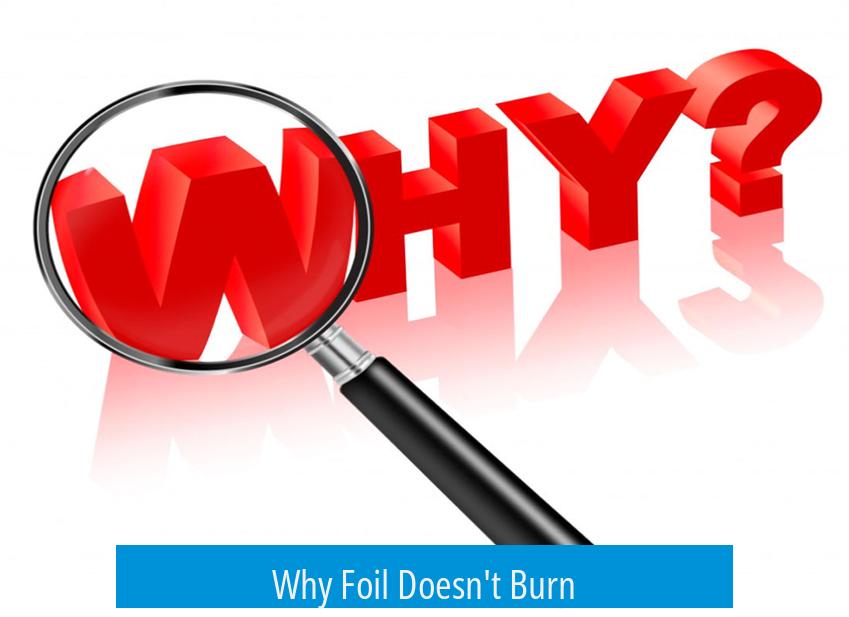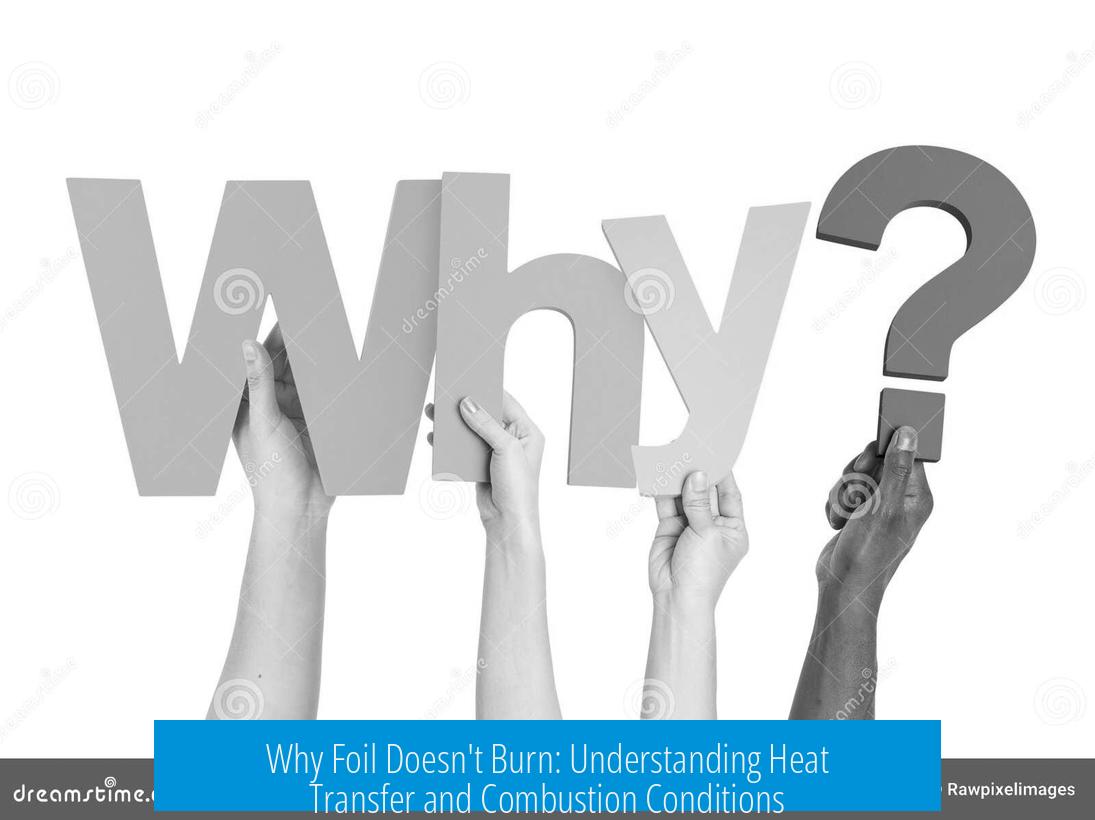Why Foil Doesn’t Burn

Aluminum foil doesn’t burn under typical conditions because it does not spontaneously oxidize at ordinary temperatures and atmospheric oxygen levels. This fundamental property prevents the foil from catching fire in everyday use, such as in kitchens or when exposed to moderate heat.
Lack of Spontaneous Oxidation
Aluminum foil remains stable because it resists spontaneous combustion. The thin oxide layer on aluminum protects it from rapid oxidation at standard atmospheric oxygen concentrations and temperatures. This natural passivation stops flame propagation and prevents burning.
Combustion Requires Special Conditions
Aluminum can burn in pure oxygen environments due to an exothermic oxidation reaction. However, combustion usually needs fine aluminum powder. The large surface area of powder particles allows rapid reaction. Foil lacks this surface area, making burning in normal air nearly impossible.
Heat Transfer and Thermal Mass

Foil’s ability to avoid burning also stems from its heat transfer properties. Aluminum has very high thermal conductivity and low thermal mass. This means it rapidly spreads heat to its surroundings, quickly cooling itself. When taken out of the oven, foil loses heat quickly and rarely stays hot enough to ignite.
Misconceptions and Extreme Heating
- Aluminum foil can oxidize or burn at extremely high temperatures, such as on a hot grill.
- Foil may vaporize if exposed to very intense heat.
- Some confusion occurs when aluminum is mistaken for tin; they are different metals with distinct properties.
Industry Applications Reflect Thermal Traits
Automakers use aluminum in engine blocks due to its superior heat dissipation and lighter weight compared to steel. These same thermal properties explain why foil does not burn easily and cools quickly after heating.
Key Takeaways
- Aluminum foil resists burning mainly because it does not spontaneously oxidize at normal temperatures and oxygen levels.
- Combustion can occur, but only with fine aluminum powder and in pure oxygen environments.
- High thermal conductivity and low thermal mass enable foil to dissipate heat rapidly and avoid ignition.
- Extreme heat can cause oxidation or vaporization, but these conditions exceed typical foil usage.
Why doesn’t aluminum foil catch fire at normal temperatures?
Aluminum foil does not spontaneously oxidize at everyday temperatures and normal oxygen levels. It lacks the ability to ignite under these conditions, preventing it from catching fire easily.
Can aluminum foil burn under any conditions?
Yes, aluminum can burn in pure oxygen, but only if it is in fine powder form to provide enough surface area. Foil is too dense and does not burn like powdered aluminum does.
How does aluminum’s heat transfer affect its burning?
Aluminum quickly transfers heat to its surroundings due to high thermal conductivity and low thermal mass. It dissipates heat fast enough to cool down before it can reach ignition temperature.
Has anyone observed aluminum foil burning on a grill?
Aluminum foil can oxidize or burn under very high heat, such as on a hot grill. This shows foil can react at extreme temperatures, though it’s rare in everyday use.
Why is aluminum used in car engines related to its thermal properties?
Aluminum dissipates heat faster and weighs less than steel. This helps engines run cooler and more efficiently. The same heat dissipation prevents foil from burning easily.





Leave a Comment